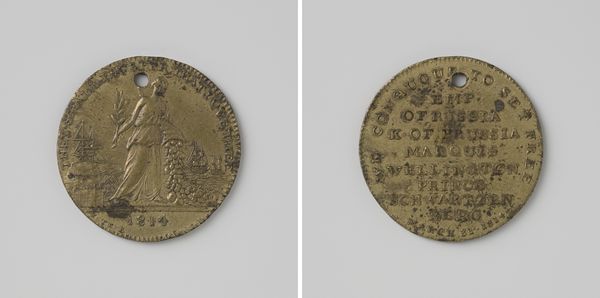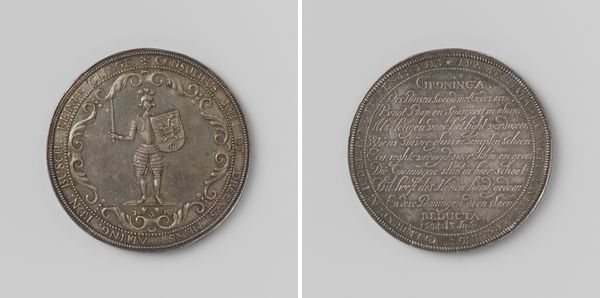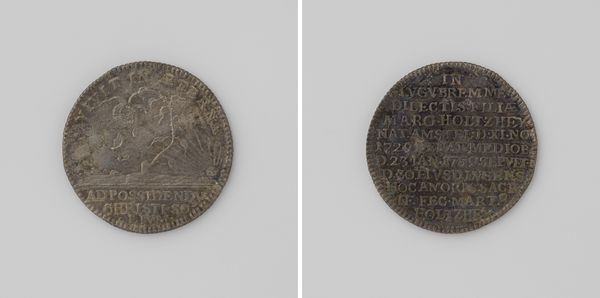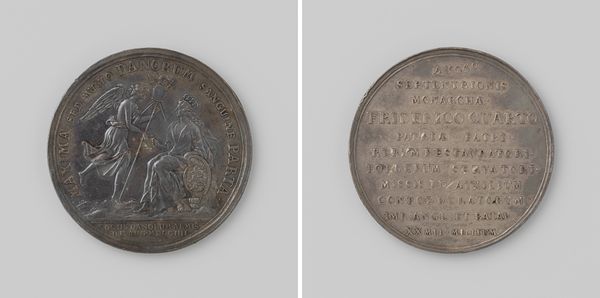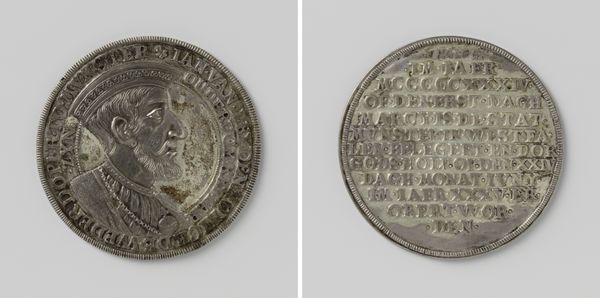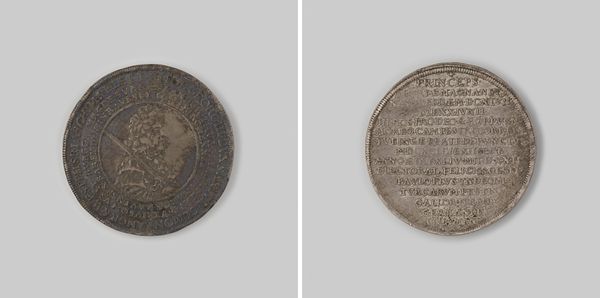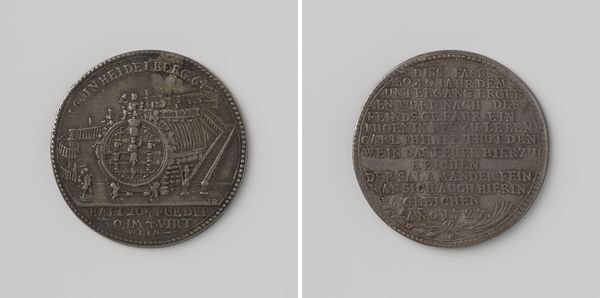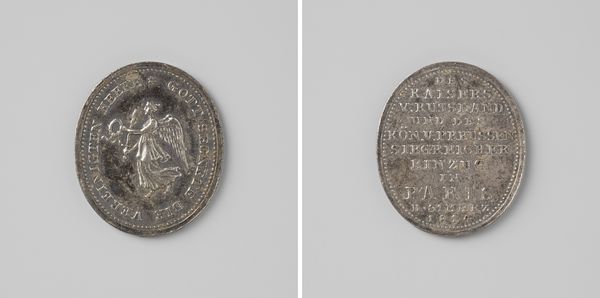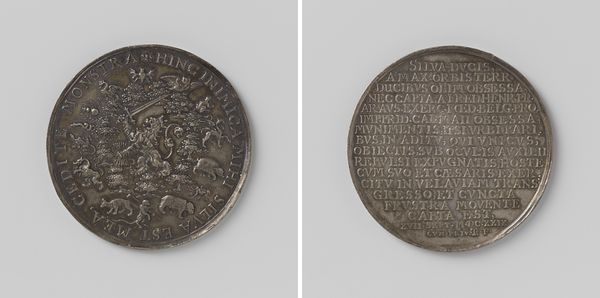
Eerste vrede van Parijs tussen Frankrijk en de geallieerden, ter ere van Gebhard Leberecht vorst Blucher von Wahlstatt 1814
0:00
0:00
print, metal, engraving
#
portrait
#
neoclacissism
# print
#
metal
#
history-painting
#
engraving
#
miniature
Dimensions: diameter 2.5 cm, weight 4.72 gr
Copyright: Rijks Museum: Open Domain
Curator: This engraving, crafted by Kettle & Söhne in 1814, commemorates the First Peace of Paris between France and its allied nations. It honors Gebhard Leberecht, Prince Blücher von Wahlstatt. Editor: There's something austere about it. The patinated metal, the miniature scale, it speaks of remembrance and maybe even a little bit of national pride cast in bronze. Curator: Indeed. It’s a physical manifestation of the politics of imagery at the time. Blücher was a celebrated Prussian field marshal. Producing and distributing these medals helped to solidify his heroic image and, by extension, reinforce the political narrative of victory and peace imposed by the Allied forces. Editor: Absolutely. You can see how the process itself, engraving on metal, lent itself to the communication of a specific, lasting message. It's meant to endure, to circulate, to be held in hand. This isn’t some ephemeral painting, this is meant to root itself in everyday material culture. Curator: Exactly. The use of metal itself also reflects a return to classical models but it is mass produced. We see that impulse to monumentalize events through these accessible keepsakes. This medal acted as a potent tool for shaping public memory, far more enduring than just news print. Editor: I am struck by the fact that the metal it is made from—it must have been chosen to give a feeling of permanance? Did ordinary people purchase similar tokens, or was this type of memento mainly for aristocratic patrons? Curator: I think this sort of token became quite accessible for a broad audience; remember this was the start of an industry around celebrating patriotic victories. Editor: The First Peace of Paris didn't last. I am certain these would have been stored away only a short time after this date. Curator: Yes, it's an artifact embedded in a short moment of celebration that makes this piece so incredibly significant for understanding shifting sentiments towards state power. Editor: Well, I look at the methods, at how material itself can hold so many layers of historical, political, and social meaning. Curator: Precisely, offering insights into how public opinion was molded and commodified through art.
Comments
No comments
Be the first to comment and join the conversation on the ultimate creative platform.

